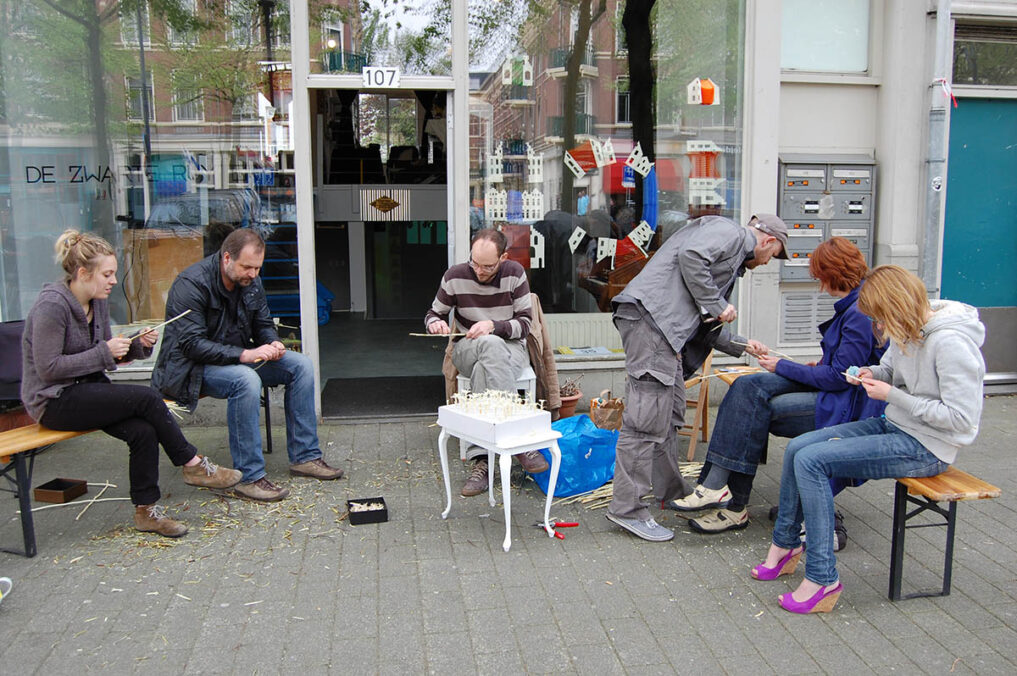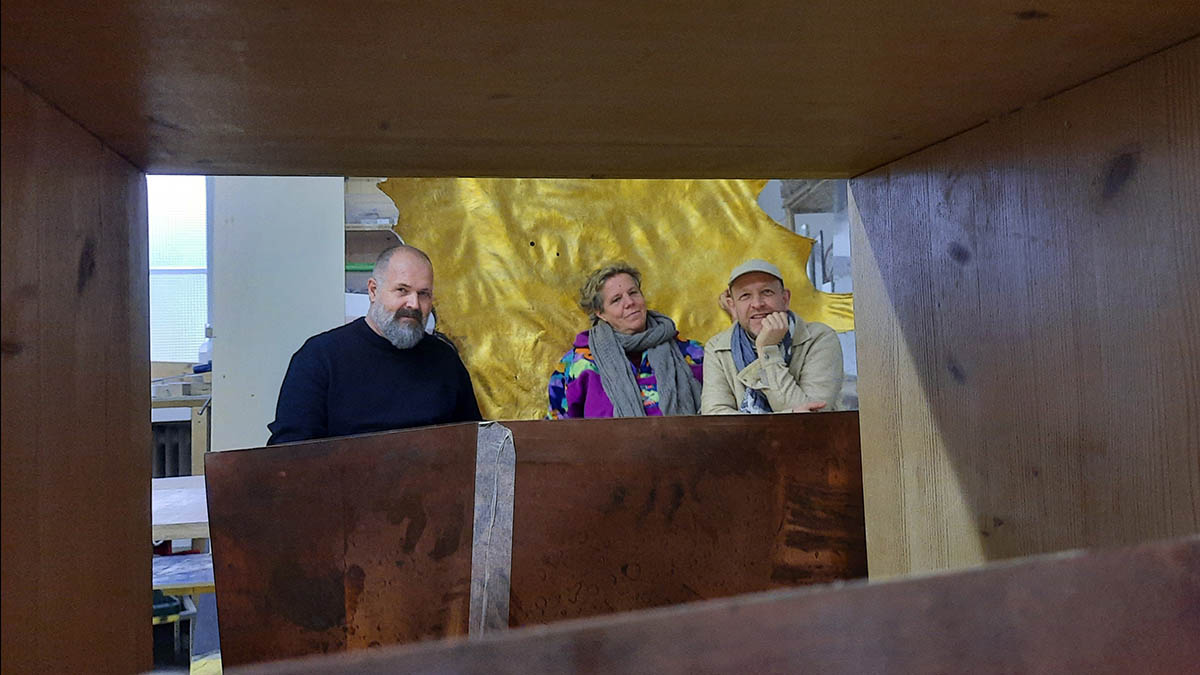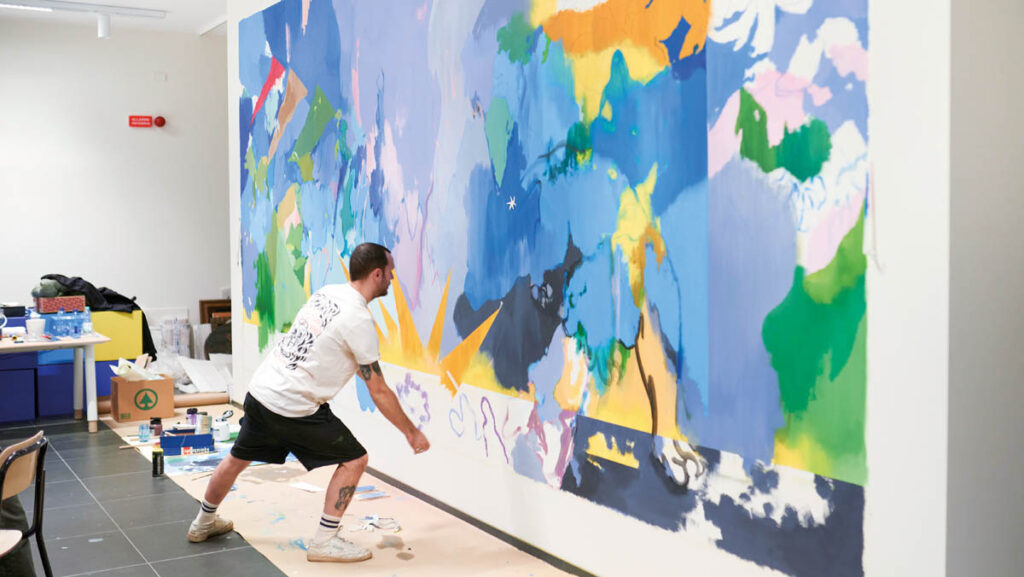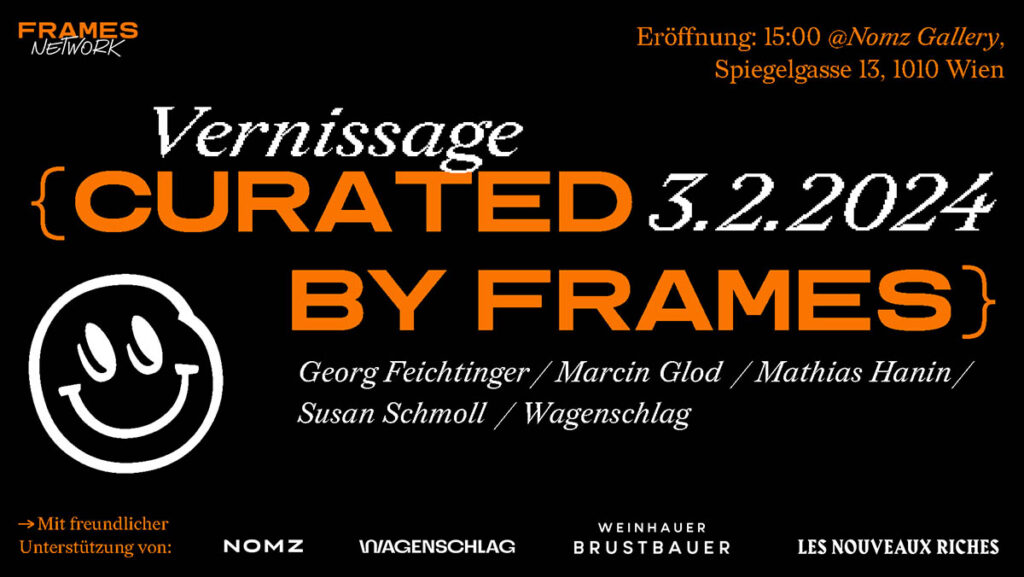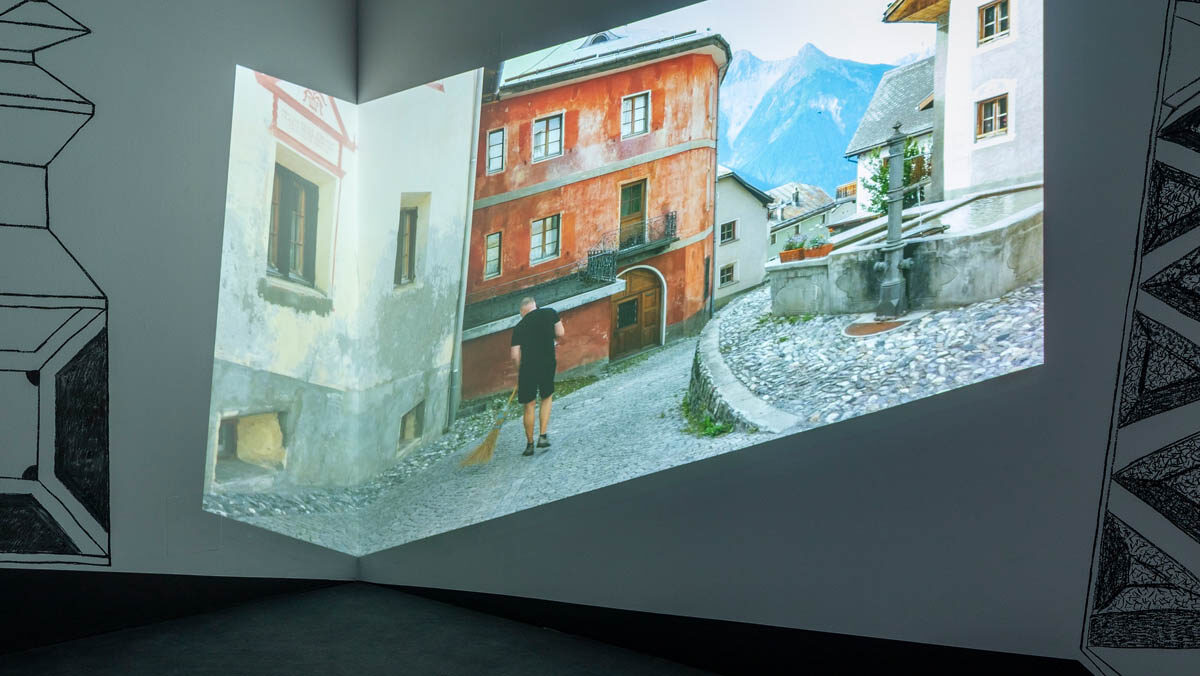
In the contemporary world they inhabit, there is no periphery. The massivs of mountains are there to widen their field of vision. In Alpine Gothic words: „When you move in the mountains, the environment and what you see often changes already after just a few meters. You look down from above on what you know and the spatial distance widens your field of vision. The perspective is constantly changing. Based on this, the concept of changing perspectives established itself as an essential leitmotif of our work. „
*In 2021, Alpine Gothic received the Advancement Award from the Salzburger Kunstverein and the Land Salzburg.
Erka Shalari: What role do architectures of places play in your work? What has, for instance, been one of the most unconventional places where you have been showing your work?
Alpine Gothic: Most of our projects at one point take place in public spaces. We are interested in the implementation of contemporary art discourses in people’s everyday lives. Our concept of work is very open and in the course of a project, a comprehensive collection of research materials, objects, set pieces, photographs, and videos are created, which we usually bring together very flexibly in our exhibitions in the form of test set-ups. The architectural conditions of exhibition spaces certainly play an important role. We analyze about the content and aesthetic concerns of our respective exhibition concepts to be able to use them ideally for our installation displays and, in many cases, to deconstruct them. An example of this is the exhibition Tschlin, which was shown last winter at the Salzburger Kunstverein and for which the exhibition space was shaken up with wall drawings and paintings (see: Salzburger Kunstverein). Probably, the most unusual place where we have shown our work was the Maschinenring headquarters in St. Johann im Pongau. There we presented our project Alpenglühn am Wiesenrand and we couldn’t have wished for a better context.
In that project, parts of tractors were painted by various car painters from the Salzburg tuning scene with their individual idea of the colour alpenglow. These tractors are still being used by farmers in everyday life as mobile works of art in the landscape.
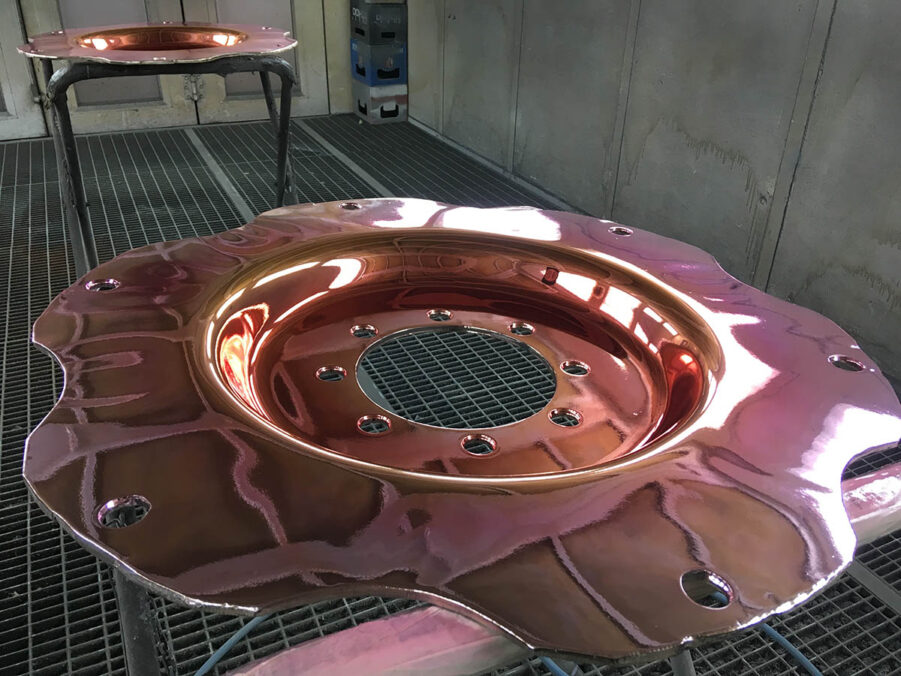
Alpenglühn am Wiesenrand (Alpine Glow at the Meadow’s Edge), painted rims of care wheels, paint workshop Eugendorf, (c) Alpine Gothic
When you say Alpine, do we refer here just to Austria, or do you also extend the research to the broader Alpine Region?
“Alpine” actually may refer to any mountainous region. It stands for the mountains, for the wildness of mountain landscapes, but also for the special conditions and challenges of these rural areas. When you move in the mountains, the environment and what you see often change already after just a few meters. You look down from above on what you know and the spatial distance widens your field of vision. The perspective is constantly changing.
Based on this, the concept of changing perspectives established itself as an essential leitmotif of our work.
Of course, our understanding of the “Alpine” goes far beyond the borders of Austria, and we understand the term to be much broader than just topographical. For example, we researched phenomena in Turkey or Mexico that are comparable to aspects of our local Alpine culture. For next winter, we are planning a research stay in the Cordillera Cantábrica in northern Spain.
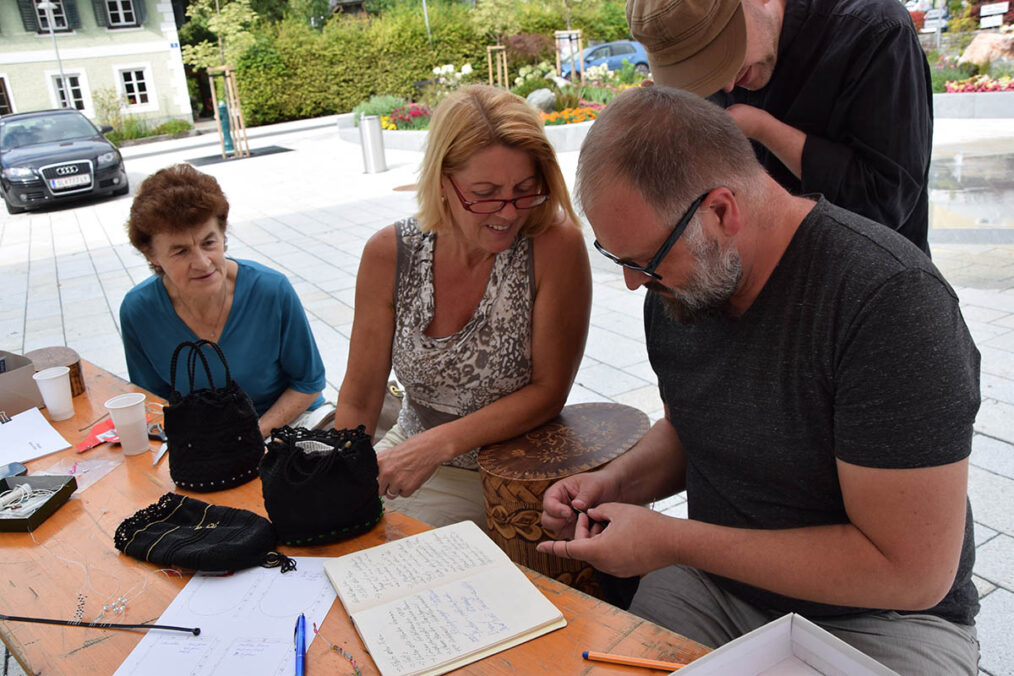
Dorfkünstler:innen, work situation on the village square with residents of Fuschl, Fuschl am See, (c) Alpine Gothic
While watching the work MXTX, interactive performance (2021), I wondered about your role in public space. How do you treat it? What extra responsibilities come along when we occupy it?
For this art in public space project, we staged our reflections on tradition, customs, cultural identity, and museum archiving as a performance at the Burgring in Vienna in collaboration with a professional dancer. It was about encounters with the unknown, the foreign, but also about aesthetic analogies. In this specific case, we referred to the carnival figure of the Spiegeltuxer from the village Thaur in Tyrol, the Penacho from the World Museum in Vienna as well as traditional costumes from Mexico. We had the opportunity to have conversations and exchange ideas with passers-by who were watching the performance. This is particularly important to us in all of our projects. We often use public spaces as our primary working space. For our Dorfkünstler:innen project, we installed our office on the village square in Fuschl am See for one month. There we discussed various topics with passers-by and also with invited residents of Fuschl.
In a way, we simply share public space with everyone else and thus anchor our artistic work and the resulting discourse right there. Only in a further step does the transfer into protected art spaces take place.
And now, a generic question that tries to understand how the works generally evolve in a collective. Where do you start?
We have been working together since 2009. During this period, a lot of ideas and topics for projects and artworks have accumulated and it is actually a question of time and resources to finally try them out and implement them. In general, our projects develop from careful observations and extensive research and may have their origin in a serendipitous event. In 2022, for example, we were on a work retreat in the Swiss Engadine, where the sweeping sound of a broom caught our attention as we were quickly cleaning the front door area. This moment led to an on-site sweeping performance lasting several days and to the production of several broom objects, videos, and also to performative works in a theater context.
Your works are conceived and implemented in a very participative way. How is it to work in such a manner?
One example of a participatory approach in our work is the 10.000 Edelweiß project. A Tyrolean mountain farmer taught us how to create edelweiss from a birch branch by making specific cuts. The edelweiss is not just any flower but provokes discussion through its controversial symbolic notation. In public places in Vienna, Rotterdam, Hallein, etc., we invited passers-by to sit with us and carve edelweiss together. In return for us teaching them this technique of carving edelweiss, the wooden flowers remain with us, and we use them for installations in exhibition contexts. In many cases, we ended up in very detailed discussions about art and artistic practice with the people, who sometimes stayed with us for more than an hour. The project is ongoing. At the moment, we have 3452 Edelweiß.
Alongside collective works, you also all work as solo artists. Can you elucidate on it?
It is true that, apart from our work as Alpine Gothic, we each pursue our own individual artistic work. Nevertheless, it is far from our mind to present our individual artistic positions here, although the art world often feels the need to identify the singular positions or the individuals behind the collective and its work. This is almost incomprehensible for us since we speak with one voice as a collective, and the question of individual authorship within a collective practice seems almost absurd to us.
This much we can say: We are three completely different personalities with three completely different artistic positions who are not afraid of putting our own artistic egos aside. We love to use synergies and try out different approaches. We enjoy experimenting together and working on daring projects. And what is particularly important: We are not afraid to fail!
Is there any collective or book that has inspired or helped you while working together?
Before our collective was founded, two of us had already been working together with another artist for several years. One left, interests and topics changed and the remaining two organized the symposium Splittergruppe Almrausch at the Wienstation in the Gürtelbögen in Vienna as a kind of secret casting for a new third member and also to realign our focus areas. Since then we have been working as the trio Alpine Gothic. From the very beginning on, we felt that working together was very natural and we never concerned ourselves with how other collectives or groups work together. However, it happens quite often that we are approached about this issue, especially by the art world.
And as we are reaching the end of the year, how has 2023 been for Alpine Gothic?
2023: First some decent action (Salzburger Kunstverein, Museum der Moderne Salzburg), then taking a deep breath, then conceiving new projects and starting to work for upcoming exhibitions, writing applications, winning competitions, taking rejections and then working for spring 2024 (project Stammtisch für Alle at 100 Jahre Kunst im Traklhaus, January – March | group exhibition participation, at Kunstraum Pro Arte Hallein curated by Les Nouveaux Riches, April – May | solo exhibition Galerie Sophia Vonier, April – May).
ALPINE GOTHIC – www.alpinegothic.net
Note: From April 13th to May 18th, the collective Alpine Gothic will be part of the upcoming Les Nouveaux Riches group exhibition, curated at Kunstraum Pro Arte Hallein. The exhibition brings together works by Alpine Gothic, Rebecca Merlic, Francisco Valença Vaz, and Mara Novak. Stay tuned!
Erka Shalari (*1988, Tirana) is an art writer and curator. She has been graduated in psychology and art management. Her work is dedicated to uncovering unique artistic positions in contemporary art. The work methodology is strongly influenced by psychology, epistemological works, and also affects and rituals. Since 2020, she has been working as an International Editor at Les Nouveaux Riches.



